In case you missed our last post, be sure to check out my new book, Birding for Boomers. It’s a great gift for anyone you know of any age or background who might be interested in getting into birds. It’s also a great way to support our efforts here at FatherSonBirding! Why not order one or two copies—or even a dozen—right now?
I’ve had little time to catch up on our birding adventures this time of year. With new books to promote, house guests to entertain, seeing Braden off to his senior year at UMaine, and more, life has been a juggling act through August and September. I did manage two lovely trips to Freezeout Lake in August, one with my occasional birding buddy Steve Flood, the other with Braden right before he headed East. In mid-September, I also rewarded myself with a personal trip to the Bay Area to visit friends and relatives—and, of course, see as many birds as possible. Like the recent trips to Freezeout, my primary objective was to find and study as many migrating shorebirds as possible.
Despite birding for more than a decade, I still feel like a beginner when it comes to shorebirds. My recent trips to Freezeout were “study sessions” more than birding excursions, and I was grateful that Baird’s Sandpipers, Red-necked Phalaropes, Semipalmated Sandpipers and other species offered hours of observation and ID practice on each trip. I hoped for similar sessions in California. After I spent a few days with relatives in Oakland and reconnected with the delightful birds of oak woodlands, my friend Scott (see Eastern Odyssey 24: Return to Westby) whisked me off to the North Bay, where serious birding adventures commenced.
Before heading across the Richmond Bridge, we gave McLaughlin Eastshore State Park in Berkeley a try, but our timing was off as high tide covered the mudflats. Next, we visited the Las Gallinas Valley Sanitary District in Marin County. I enjoyed that, but again, we saw nothing spectacular. I was surprised to spot a lone Vaux’s Swift—a lifer for Scott—and eight or nine Black Phoebes put on a show, but it was a slow start to meeting our birding ambitions. Fortunately, things would pick up—dramatically.
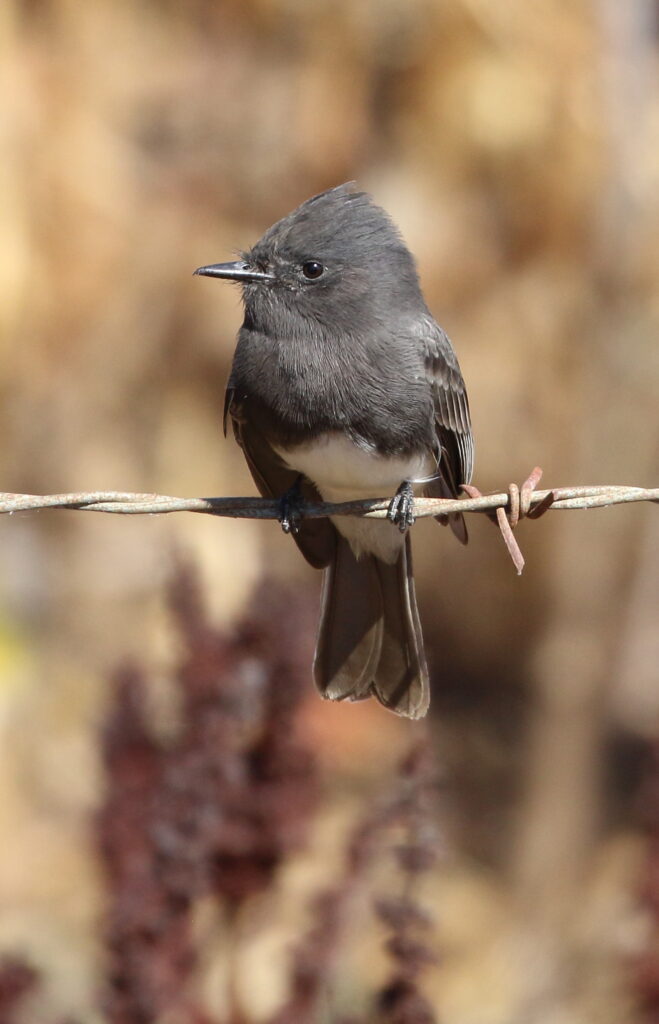
After Las Gallinas (“The Hens”), Scott drove us to Reclamation Road in the San Pablo Bay National Wildlife Refuge, where we hoped—finally—for some shorebird action. Our first surprise wasn’t shorebirds, however. As soon as we got out of the car, I spotted four tiny shapes frantically flying west. “Hey, there’s more Vaux’s Swifts.” I really hadn’t expected to see these, but it did make sense. I knew they’d departed Montana in the past few weeks and that they followed the West Coast down to their wintering grounds in Mexico and Central America. Our four birds were merely a prelude, however. As Scott and I walked out toward the shore, we saw half a dozen more swifts. Then a dozen. Then, as we looked east, we witnessed a veritable river of Vaux’s Swifts flying toward us.
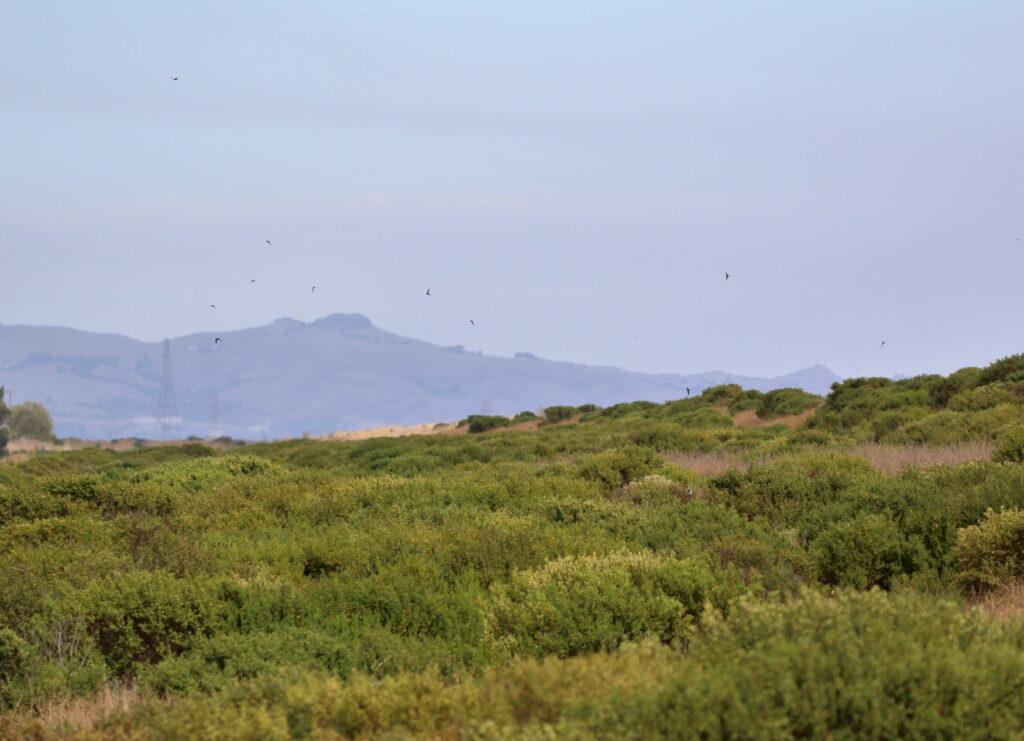
“This is amazing,” Scott said as the birds stiff-winged it over our heads. “Have you ever seen anything like this?”
I shook my head. The most VASWs I’d ever seen at one time was perhaps a couple of dozen. Now, hundreds streamed past us—probably thousands! We learned from a passerby that they were most likely heading to the chimney of an old brick-making plant, a well-known roosting place for them. Scott and I were suitably awed by the sight. It was enough to make the whole day worthwhile, whether or not we ended up seeing shorebirds.
Nonetheless, as we walked out to the bay I was gladdened to see shallow mudflats and hundreds of dots scattered over them. “Shorebirds!” I rejoiced.
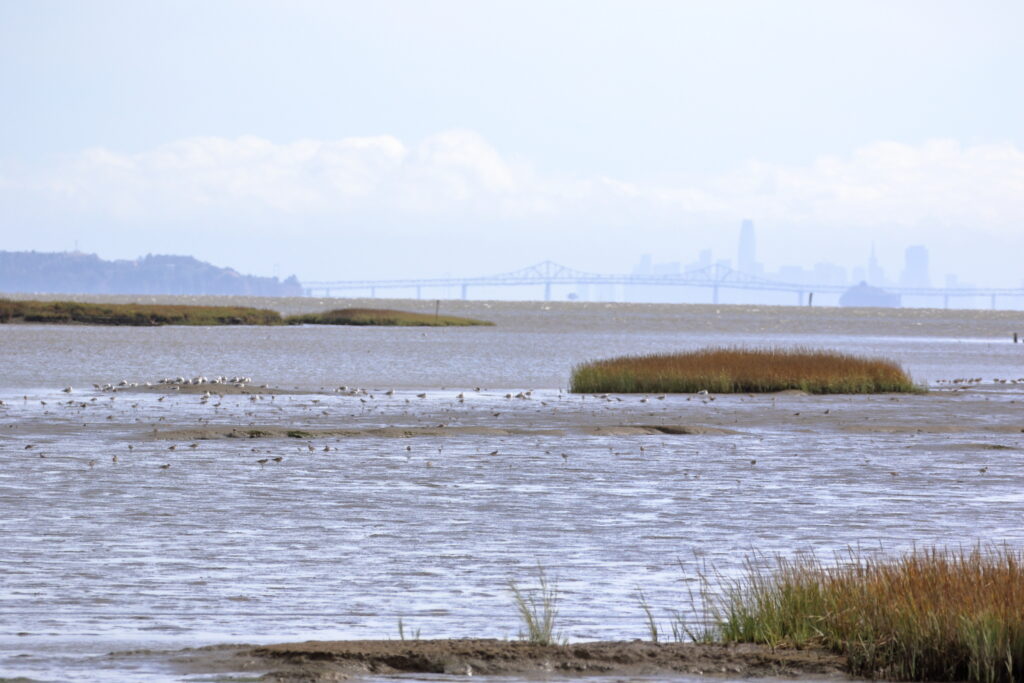
As we drew closer, I set up the spotting scope, and quickly zoomed in on a dozen-plus Long-billed Curlews, at least fifty Willets, and what would turn out to be a couple of hundred Marbled Godwits. These were easily-enough identified. Not so the hundreds of small sandpipers, or “peeps,” that peppered the scene in front of us. Birders generally include four species under the “peep” category: Sanderlings, Western Sandpipers, Semipalmated Sandpipers, and Least Sandpipers. Since it was the nonbreeding season, Sanderlings should have given off a distinctive whitish vibe by now, so I ruled them out, but what of the other three? The problem with peeps is that their coloration, size, bill shape and bill length overlap to a frustrating degree, and I just didn’t have enough experience with these to make a call. Least Sandpipers can be easy to pinpoint if you can see their leg color—yellow compared to black for Westerns and “Semipalms”—but when they were feeding in the mud, determining leg color often proved impossible.
As I often do in such situations, I called Braden. I described what I was seeing and said, “I am guessing that they are Semipalmated Sandpipers, but I just don’t know.”
“Well,” he informed me, “the good news is that if there are large numbers of them, they aren’t Semis because Semipalmated Sandpipers don’t move through the West Coast.”
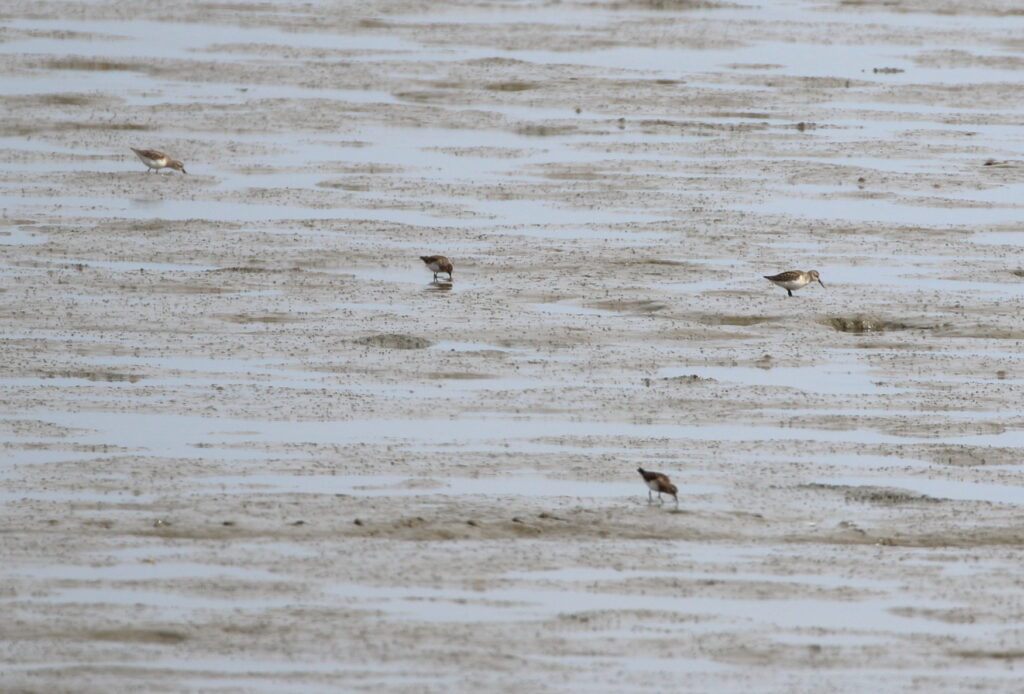
Doh! This surprised me because we do see them in Montana. I never realized, though, that our Montana birds were on the western edge of their migration pathway from their northern breeding grounds to their wintering grounds in the coastal tropics.
“If I had to guess,” Braden continued, “I’d say you’re looking at Least Sandpipers. You said that they’re darker brown and Westerns give off a grayer color.”
Still, even through the scope, the birds were too far away for me to be sure, so I recorded “peep sp.” in my eBird checklist—at least for now.
One species, however, excited me more than all the others. Almost as soon as we reached the mudflats, I spotted birds that I had especially hoped to see: Black-bellied Plovers. Black-bellied Plovers are one of the world’s largest plovers, and they have the widest distribution. Like many shorebirds, they breed mainly in the arctic regions, but in winter they disperse to coastal areas of every continent sans Antarctica.
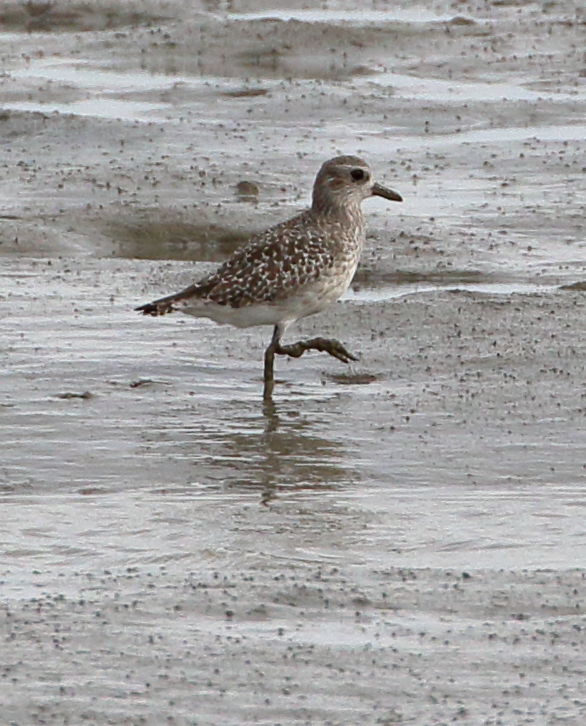
Braden and I had only ever seen Black-bellied Plovers about twenty times—and only four times as they migrated through Montana. The birds are known to flock up in winter, but even in places such as California and Texas, we generally only saw a few at a time. Now, as I trained my scope out over the mudflats, I began picking out more and more of these birds. At first, their light color and larger size made them look kind of like gulls, but their more erect posture and stubbier dark bill gave them away. One bird they can easily be confused with are American Golden Plovers, which look almost identical except for their smaller bill, head, and overall size. Some AGPLs also show flecks of gold color even in winter, but today, I saw no AGPL suspects and counted sixty Black-bellied Plovers in front of me.
“I don’t think I’ve ever seen this many before!” I effused to Scott. “This is really amazing.”
What I didn’t realize is that I vastly undercounted. I took a couple of photos of shorebirds in flight and later, going over the images, I made a startling discovery. One of the flying flocks consisted of at least 140 Black-bellied Plovers! How could I tell they were BBPLs instead of other shorebirds? In this case, it happened to be easy. Black-bellied Plovers are the only shorebirds to show distinct black armpits under their wings!

It was a great way to end the day for both me and Scott and we celebrated with a fabulous Mexican food dinner with Scott’s wife Ginny and step-daughter Hayley. I went to bed happy—but eagerly looked forward to more migrating bird opportunities ahead.

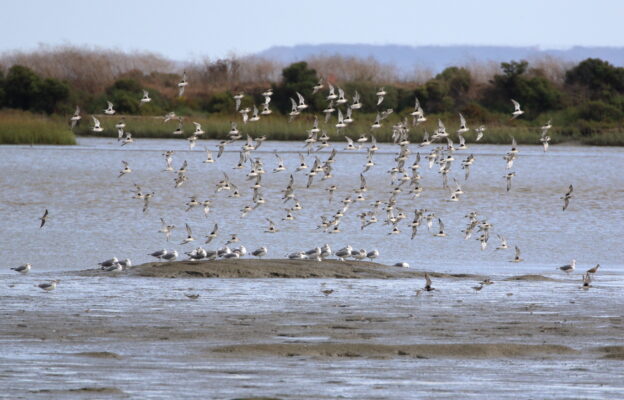
I suppose I have a responsibility to the reader, since I was there, to corroborate the accuracy of Sneed’s journalism. It may appear that Sneed was exaggerating his enthusiasm for Black Bellied Plovers. Let me assure you that nothing could be further than the truth. From the ride to the San Pablo Refuge to the ride home and even the ride to the restaurant with my wife and second daughter, it was plovers-this, plovers-that. On two following days with my two birding friends, Sneed couldn’t help mentioning the plovers at least twice during each birding trip. Since Sneed left the west coast, my friends and I now call an especially exciting birding siting or session a “plover-this, plover-that” moment or day.
“You’ve gotta here what I saw yesterday”
“Wait, do I need to sit down? Was this a ….”
“Ploverthisploverthat, man! You’re not going to believe it. Plover-this, plover-that.”
I suspect people will be heard saying the phrase at our local Audubon events very soon.
But did I tell you about the plovers I saw out there???
What a ploverful post! Glad you guys got to experience such a great BBPL sighting. Checking my eBird stats, I have only seen the species five times, all during my Bay Area birding days.
They are a very curious bird, and I am eager to keep learning about them! I’ll bet a few come through Bend every year–but timing is important. We’ve seen them only a handful of times in Montana, too!